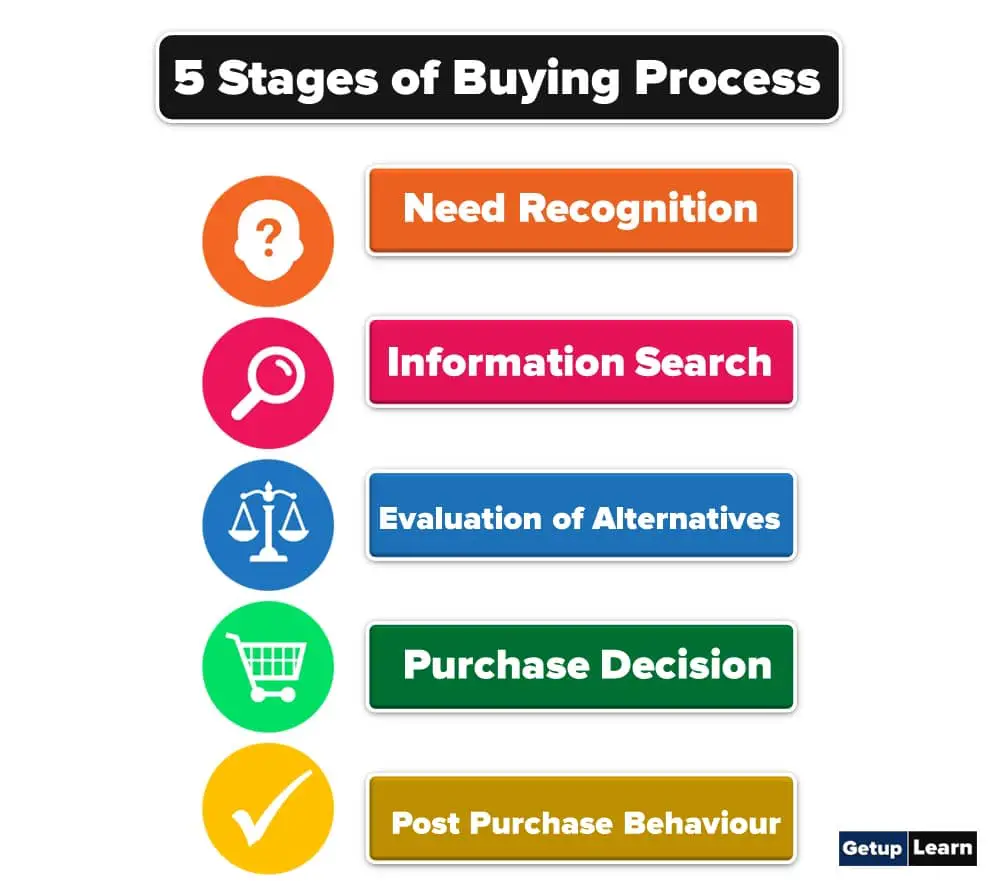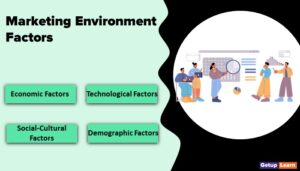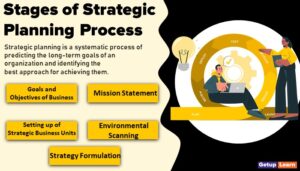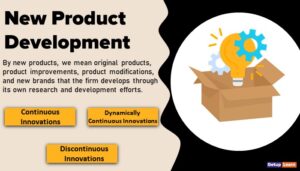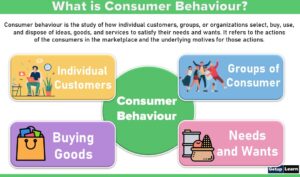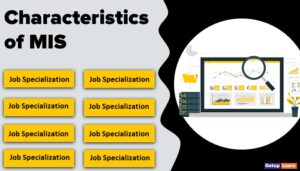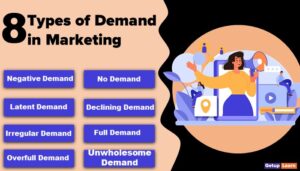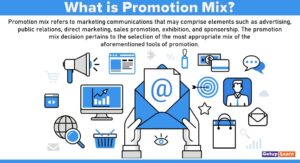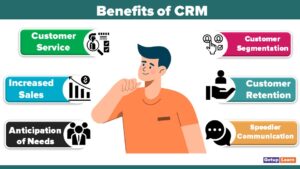Table of Contents
5 Stages of Buying Process
These are the 5 stages of buying process that consumer goes through while making a purchase:
- Need Recognition
- Information Search
- Evaluation of Alternatives
- Purchase Decision
- Post Purchase Behavior
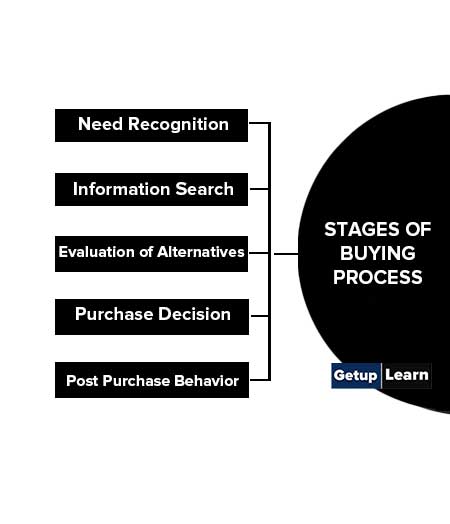
Need Recognition
The consumer will not able to purchase the product unless they know what are their needs or want. If they know that they require a particular product then only consumers will buy that product. The need arises when there is a problem.
For example: If you break your laptop which you were using daily, a need arises to purchase a new laptop. Want arises because you are influenced by some external factors.
For example: If you find your friend using an Apple Laptop, and you might have seen its reviews on Internet, you feel you want to upgrade to an Apple laptop, though you may already have a Dell laptop.
Information Search
After need recognition consumer are aware of their need or want. They know that what product they will buy which will solve their problem. Therefore, he wants to know more about the product and does an information search.
When consumers want to buy a laptop, they look for its features, price, discounts, warranty, after-sales service, insurance, and other important features. Here, a marketer must offer a lot of information about the product in the form of informative videos, demos, blogs, how–to–do videos and celebrity interviews.
Evaluation of Alternatives
In the first and second stages, consumers have done lots of research about the product’s needs and have collected information about the product. Information gathered from various sources is used in evaluating alternatives.
There are many products available in the market which can solve consumer problems. Hence, it is the consumers who have to make a choice after evaluating the various available alternatives.
Purchase Decision
In this stage, the consumer is deciding whether to buy the product or not. Yes, even at this stage consumers can drop the purchase and walk away. Philip Kotler (2009) says the final purchase decision may be ‘interrupted’ by two factors.
Customers may get negative feedback from friends or other customers who have bought it earlier. E.g., a customer shortlists a laptop, but his friend gives negative feedback. This will make him change his decision. Secondly, the decision to buy a laptop itself might change.
For example, sudden changes in business plans, financial crunch, unexpected higher prices, etc. might lead the consumer to drop the idea of buying a laptop. The Consumer chooses the product that he wants to buy, but many times, he may not actually buy it for various reasons. At this stage, a marketer should find out the various reasons why the consumer is hesitating to buy.
The reasons could be price, value, and changes in the needs of the consumer. The marketer needs to step up the game. The marketer may start reminding the customers of the reason behind their decision to buy the product.
Furthermore, give as much information regarding your brand, reiterating that you are the best provider of the product that can fulfill his needs. Retargeting by simple email reminders can enforce the purchase decision.
Post Purchase Behavior
After the purchase, a consumer always compares products with their expectations. There can be two outcomes; consumers may be either satisfied or dissatisfied. If the product satisfies the need of the consumer then, they are happy.
Otherwise, the consumer will be dissatisfied and feel that they have taken an incorrect decision. So, he may want to return the product or exchange it. Even though the customer is satisfied, there is no guarantee that the customer might come again to purchase another product.
A marketer has to make sure that the consumer is satisfied with the product so that his experience will lead to repeat purchases by customers. Brands need to be careful to create positive post-purchase experiences.
What are the five stages of the buying process?
These are five stages of the buying process:
1. Need Recognition
2. Information Search
3. Evaluation of Alternatives
4. Purchase Decision
5. Post Purchase Behavior.

